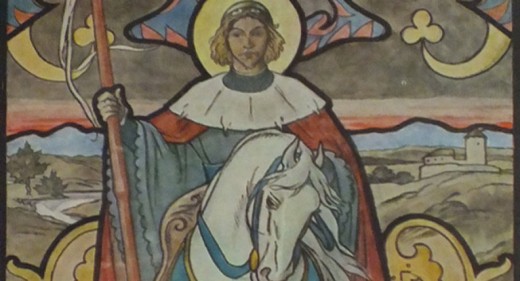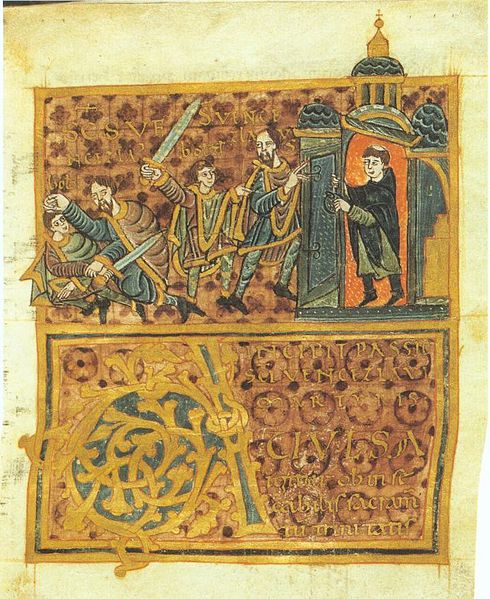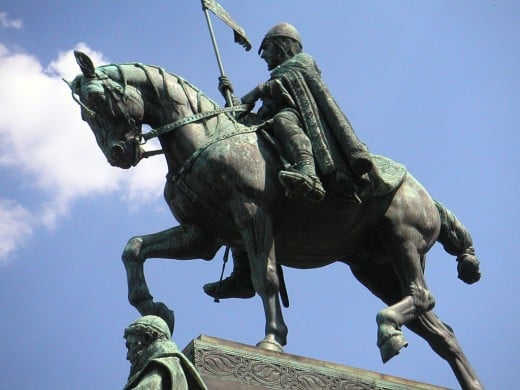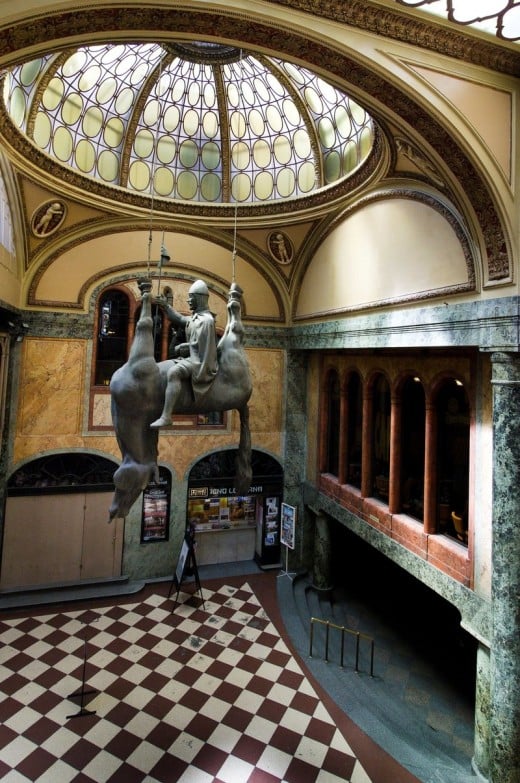Who Was King Wenceslas?
Looking Back to Medieval Days

The Real Person Portrayed in the Song
The actual man personified by King Wenceslas was actually the Duke of Bohemia, who was born in 907 in the Czech city of Prague and died in 935 at the hands of his younger brother, Boleslav the Cruel. The young duke had assumed his royal position around age 18, and held it until his untimely death at age 28.
During his lifetime, the duke went by the name of Vaclav the Good; and was only declared a king after his death by Otto I (or Otto the Great), a German king, who became Holy Roman Emperor in 962 A.D. Since the 10th Century, there have been several others Kings named Wenceslas (sometimes spelled Wenceslaus). Naturally, they have been named II, III and IV, so as a result, the good king and original Wenceslas may sometimes be referred to as Wenceslas I.
The Killing of Vaclav (King Wenceslas)

A Violent Time
During the Tenth Century in Bohemia, Christianity existed side by side with paganism, a fragile situation, which lead to much infighting and violence. For Vaclav (the first King Wenceslas), the trouble began when his father died and he was sent to live with his paternal grandmother, who was Christian. This caused Vaclav's mother, a pagan named Drahomira, to strangle the grandmother out of spite.
After the death of his grandmother, Vaclav continued to practice Christianity in secret until he became Duke of Bohemia in 921. At that time with the help of some of the nobles, Drahomira was killed, allowing Vaclav to practice Christianity openly. During his short reign as Duke, Vaclav very much furthered the advance of the Christian religion in what is now the Czech Republic.
Unfortunately, family rivalries were not done with yet, for in 935 A.D., the Bohemian Duke was murdered on his way to church by several of his brother's allies. Despite Vaclav's death, Christianity had become a growing movement in Central Europe..
Wenceslas Square

The Song First Appears
The song that we all now as Good King Wenceslas first appeared in 1853 in England. The words put down by John Mason Neale were original, but reportedly the music is derived from a lively Scandinavian dance tune, called "Tempus Adest Floridum", which was used to celebrate the arrival of Spring.
The combination of the new lyrics and old music evidently has worked quite well, for the lively carol is now ingrained in the Western array of Christmas music, despite the fact that it celebrates Boxing Day and does not directly mention the birth of Christ. Even so the song does invoke a strong spirit of Christianity, especially where it concerns the importance of giving.
P.S. There is also a Czech hymn named the Saint Wenceslas Chorale (Svatováclavský chorál in the Czech language) This chorale has been around much longer than the carol and has been considered the Czech anthem of statehood since at least the 12th century.
Boxing Day
Boxing Day, also known as St. Stephen's Day, falls on the day after Christmas and is robustly celebrated across much of the British Empire. Saint Stephen was a real-life First Century Jewish martyr, who lived in the Holy Land and was stoned to death for following the teachings of Christ.
In English-speaking countries this feast day has nothing to do with the manly art of fist fighting. Instead, it has everything to do with the giving of gifts and money to the working class and poor by the wealthy and well-to-do. As British tradition has it, these gifts were often placed in boxes, before being distributed, hence the name.
Boxing Day also was a time to enjoy the leftovers from Christmas Day Feast, which also might include much consumption of mead and wine, thus making this date a continuation of the joyous festivities, leftover from the day before.
Good King Wenceslas by the Irish Rovers
King Wenceslas in the Modern Age
When watching the high-spirited Irish Rovers version of King Wenceslas, viewers should keep in mind that the singers are also celebrating Boxing Day, which is kind of a big deal in Ireland, as well as many nations in the British Commonwealth. Despite the comical antics of the four singers, Boxing Day doesn't involved the throwing of punches, but the day's celebration might involve social drinking and having a good time.
The Good King Riding an Upside Horse

What About That Horse
And then in Prague, the home town of the original Duke, there is this upside horse being ridden by the medieval king. Interpretations here are quite imaginative, yet there seems to be a consensus that the artist is using the saint ( and the upside down horse) to mock contemporary Prague and Czech politicians. Keep in mind that the creator, David Cerny, got his start making paintings of invading Soviet tanks, rendered in pink.



